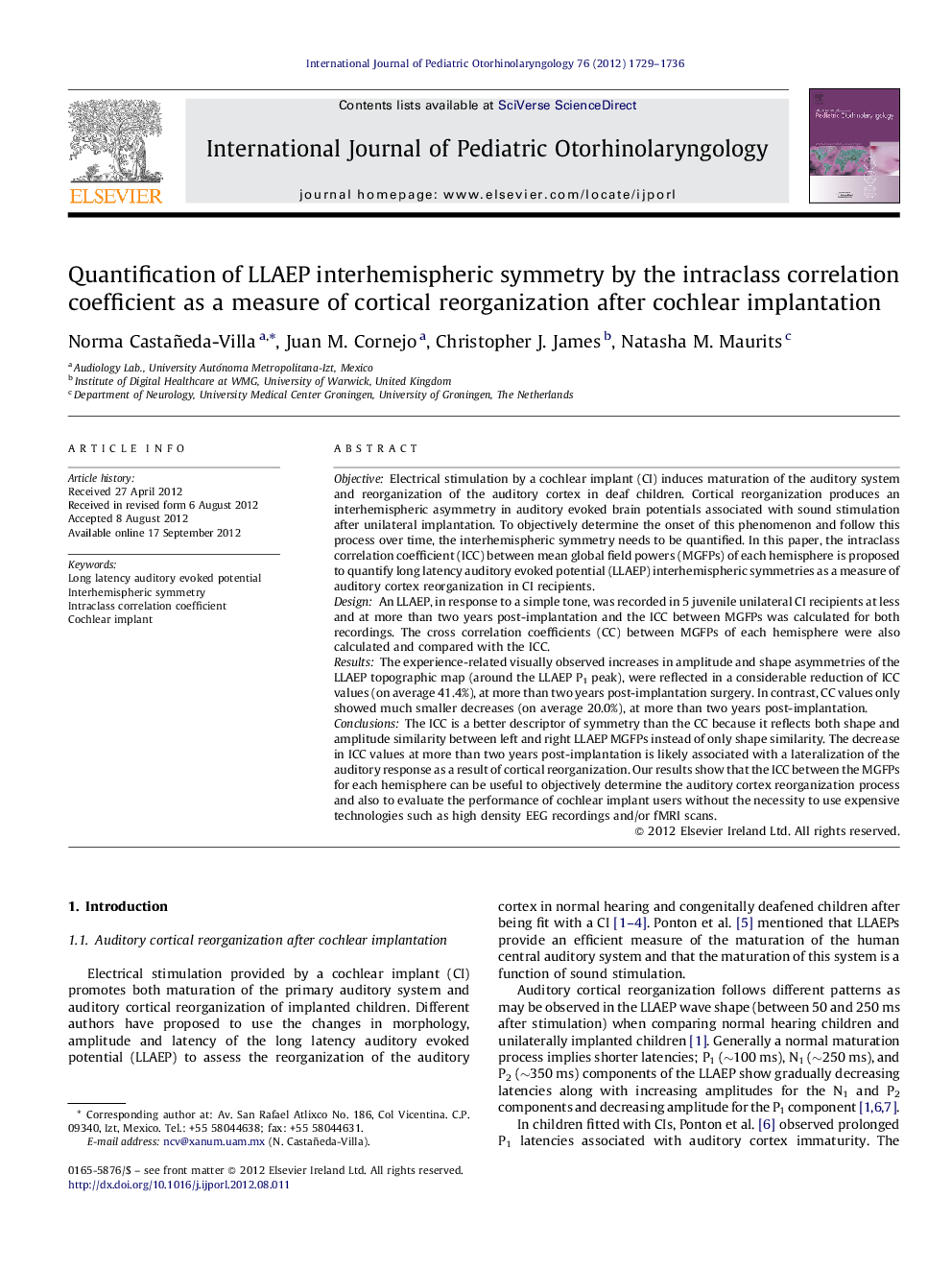| Article ID | Journal | Published Year | Pages | File Type |
|---|---|---|---|---|
| 4113259 | International Journal of Pediatric Otorhinolaryngology | 2012 | 8 Pages |
ObjectiveElectrical stimulation by a cochlear implant (CI) induces maturation of the auditory system and reorganization of the auditory cortex in deaf children. Cortical reorganization produces an interhemispheric asymmetry in auditory evoked brain potentials associated with sound stimulation after unilateral implantation. To objectively determine the onset of this phenomenon and follow this process over time, the interhemispheric symmetry needs to be quantified. In this paper, the intraclass correlation coefficient (ICC) between mean global field powers (MGFPs) of each hemisphere is proposed to quantify long latency auditory evoked potential (LLAEP) interhemispheric symmetries as a measure of auditory cortex reorganization in CI recipients.DesignAn LLAEP, in response to a simple tone, was recorded in 5 juvenile unilateral CI recipients at less and at more than two years post-implantation and the ICC between MGFPs was calculated for both recordings. The cross correlation coefficients (CC) between MGFPs of each hemisphere were also calculated and compared with the ICC.ResultsThe experience-related visually observed increases in amplitude and shape asymmetries of the LLAEP topographic map (around the LLAEP P1 peak), were reflected in a considerable reduction of ICC values (on average 41.4%), at more than two years post-implantation surgery. In contrast, CC values only showed much smaller decreases (on average 20.0%), at more than two years post-implantation.ConclusionsThe ICC is a better descriptor of symmetry than the CC because it reflects both shape and amplitude similarity between left and right LLAEP MGFPs instead of only shape similarity. The decrease in ICC values at more than two years post-implantation is likely associated with a lateralization of the auditory response as a result of cortical reorganization. Our results show that the ICC between the MGFPs for each hemisphere can be useful to objectively determine the auditory cortex reorganization process and also to evaluate the performance of cochlear implant users without the necessity to use expensive technologies such as high density EEG recordings and/or fMRI scans.
